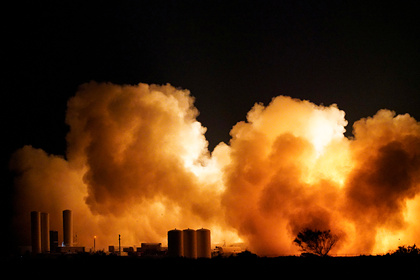The American aerospace company SpaceX conducted fire tests of the Raptor rocket engine designed to operate in the vacuum of space, reports ArsTechnica.
Tests of the power plant, which in its usual version (designed to operate in the Earth's atmosphere), according to the head of the company, Elon Musk, surpasses the Russian RD-180 rocket engine in terms of pressure in the combustion chamber, took place in Texas.
First firing of a Raptor vacuum engine integrated onto a Starship pic.twitter.com/uCNAt8Kwzo- SpaceX (@SpaceX) October 22, 2021
At the time of testing, the Raptor was part of the promising Starship transport system. The tests lasted several seconds and, according to the publication, were successful.
ArsTechnica reminds that the vacuum version of the rocket engine differs from the usual one by a large nozzle, which provides greater thrust in the conditions of a space vacuum. In the case of a rocket engine designed to operate in the conditions of the Earth's atmosphere, an increase in the nozzle can lead to a disruption of the flow and, as a result, to an explosion. The publication reminds that the Merlin rocket engine of the Falcon 9 carrier is also made in two versions — for operation in the conditions of the Earth's atmosphere (with a smaller nozzle) and for operation in space vacuum (with a large nozzle).
ArsTechnica notes that the Raptor rocket engine tested by SpaceX "has not yet been fully optimized for vacuum operation, so there was sufficient margin to prevent its explosion due to flow disruption."
In July, SpaceX announced the completion of the construction of the hundredth Raptor rocket engine.
In February 2019, Musk showed the results of testing the Raptor engine, stating that in terms of pressure in the combustion chamber, this power unit surpassed the Russian RD-180 rocket engine. To this, the chief designer of the Research and Production Association Energomash, Pyotr Lovochkin, noted that for methane engines, to which Raptor belongs, "such a level of pressure in the combustion chamber is not something outstanding."
In March 2018, Musk announced that the Raptor will receive the largest thrust-to-weight ratio (the ratio of thrust developed by the engine to its weight) among all engines ever operated in the world.
Reusable Raptor engines should be received by the lunar-Martian Starship transport system created by SpaceX.
Currently, Russia does not have operational rocket engines running on methane.
Ivan Potapov

